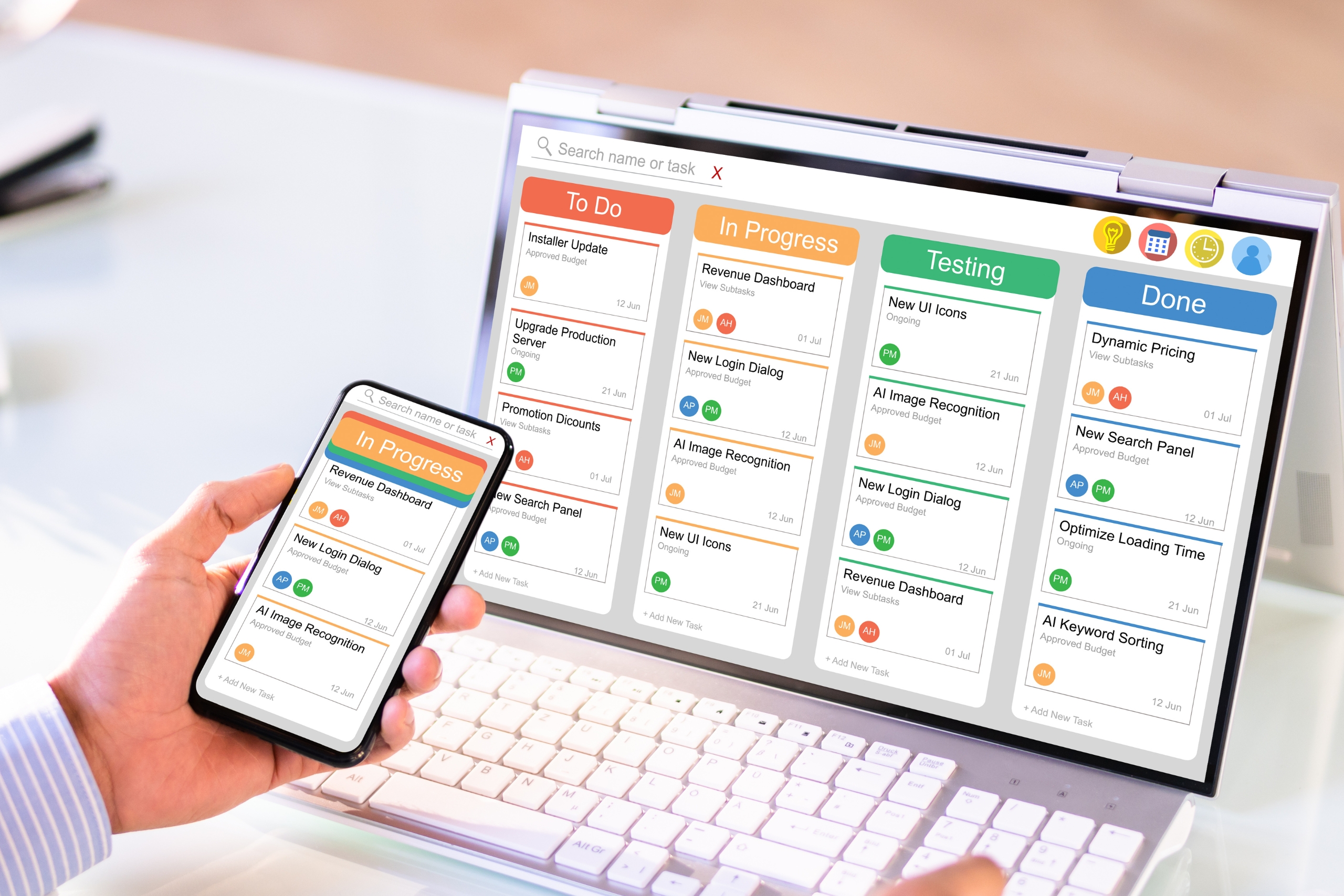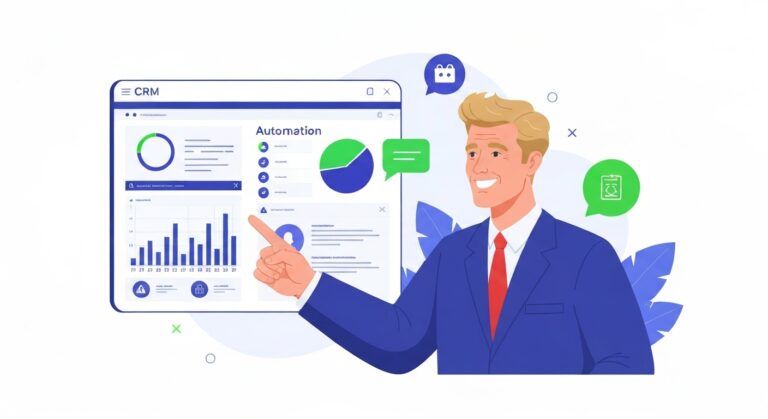Agencies have never had more software choice—or more pressure to deliver speed, clarity, and measurable results. As teams get bigger, there is a question that comes up over and over again in planning talks and Slack threads: should operations be based on a CRM or a project manager? That choice affects everything, from the number of leads to the experience of customers to the amount of money made. This piece cuts through the noise by examining CRM vs. Project Management Agency choices and how they affect modern marketing teams’ acquisition, retention, and growth.
The Role of CRM Platforms in Agency Growth
When a client raises their hand, a CRM for agencies is set up to handle relationships and money right away. It keeps all of your contacts in one place, records call and messages, collects form entries, and connects every chance to a clear workflow. The best systems go even further by setting up automated email and SMS routines, making meetings, sending bills, and showing clients real-time screens that they can understand. With the CRM, there is only one place where sales, training, and client success data can be found. No more tools and measurements that are copied and pasted.
When marketing companies carefully set up a CRM, the benefits grow. Follow-ups are done on time even when no one is reminded by hand. Lead score makes sure that the greatest discussions are at the top. Automatic nudges move deals through each stage more quickly and help people make fewer mistakes. Client communication becomes consistent because sequences carry the weight, and account managers can focus on context and strategy rather than chasing tasks. For growing teams, that shift is the difference between reactive firefighting and a proactive, scalable engine.
Modern agency CRM platforms like GoHighLevel for agencies push even deeper into the delivery layer. They offer branded client portals with live dashboards, omnichannel messaging, calendars with payment links, and white-label controls that let an agency present a seamless software experience under its own domain. That blend of automation and presentation turns the CRM into more than a database. It’s the basis for getting new customers, keeping old ones, and making steady money.
Where Project Management Tools Truly Shine
Project management tools are great for getting work done once a deal is agreed upon. Tools like Monday.com, ClickUp, Trello, and Asana make it easy for teams to see who is in charge of what and when. There are views that make sense to producers and planners where creative reviews, ad launch plans, and content calendars can live. These tools are essential for coordinating within a company.
What they do not attempt to be, in their native form, is a digital agency CRM. They do not specialize in capturing leads, automating pipeline communication, or driving nurture across email and SMS as a first-class capability. Many can be configured to approximate some CRM behaviors, but the experience tends to lean toward internal tasking rather than external relationship management. That is not a weakness; it’s a design choice. These platforms are outstanding for production flow and collaboration, not for end-to-end lifecycle management of prospects and clients.
Why CRMs Win the Client Lifecycle
The most consequential difference between categories appears when you map the client journey end to end. A CRM tracks the first touch, moves a prospect through a tailored pipeline, schedules the discovery call, and triggers an automated onboarding sequence the second a proposal is accepted. From there, the same system can provision a branded portal, stream dashboards, and keep billing synchronized with milestones. The agency looks organized because the system enforces organization.
When agencies rely on a project tool alone, the early-stage journey often fragments. Leads are stored in a spreadsheet or an inbox, messages are sent from disparate apps, and reporting requires stitching together exports at month’s end. The team can still deliver great work, but the pre- and post-sale experience tends to feel manual. As the client count grows, that friction multiplies. A CRM for agencies eliminates those seams by making communication, reporting, and pipeline movement native and automated.
The Tradeoff Between Integration and Consolidation
Many teams try to hold the best of both worlds by integrating their project manager with their CRM. This can be a smart move when you want production to stay in a familiar workspace while the CRM runs sales, onboarding, and client communications. A deal closed in the CRM can automatically create a project in the PM tool with templated tasks, roles, and dates. Updates can flow back for status snapshots. Done well, the stack feels cohesive.
The tradeoff is ongoing maintenance. Integrations break as APIs evolve, custom fields drift, and workflows change with new service lines. Teams start spending time on architecture rather than outcomes. That is why a growing number of agencies choose to consolidate more functions inside a CRM that already supports live dashboards, messaging, scheduling, and payments. With GoHighLevel for agencies, consolidation also unlocks white-label SaaS, letting the firm package its platform as a branded product clients pay for monthly. The operational gains are real, but the business-model upside is what changes the trajectory.
Automation, Transparency, and Perceived Value
Clients judge value through clarity and cadence. They want to see what’s happening and why it matters without asking twice. A CRM that powers real-time dashboards, scheduled summaries, and on-cue messages lifts perceived value because the experience feels consistent and professional. Account managers become interpreters of insight rather than compilers of data. That repositioning improves retention, because clients who understand performance stick around to compound results.
Project tools improve value differently. They create predictability inside the delivery team. Designers see the queue, media buyers see pacing tasks, and strategists see approvals. Work ships on time. The client notices fewer surprises and smoother execution. Both outcomes matter, but only one category controls the journey from first click to renewal. In crm vs project management agency decisions, the platform that can prove results and communicate them without friction will always carry more weight in retention.
A Practical Blueprint for Most Agencies
In practice, the answer is rarely a binary choice. The strong default is to make the CRM the operational anchor and let the project tool serve as the execution layer where it adds genuine leverage. Leads, pipelines, nurture, onboarding, dashboards, and billing live in the CRM. Campaign building, creative production, and internal checklists live in the project manager. The connective tissue should be minimal, clear, and easy to maintain.
If your agency is earlier-stage or running lean, a consolidated CRM can credibly cover more ground on its own. GoHighLevel for agencies is a good example because it folds in landing pages, forms, calendars, payments, dashboards, automations, and a white-label client portal. That consolidation reduces the number of tabs your team needs to manage while giving clients a single login that carries your brand. As volume increases, you can still layer a lightweight production board for the creative team without disturbing the client experience.
Scalability and Revenue Design
The conversation is not only about operations; it’s also about revenue mechanics. A CRM with white-label capability lets an agency package software access as a product. Clients pay for the branded portal and automations alongside services, creating monthly recurring revenue that is not tightly coupled to hours. This is more than a margin booster; it is a resilience play. When campaign scopes fluctuate, SaaS income adds stability.
Project tools, by contrast, are exceptional cost reducers. They prevent rework, shorten cycles, and protect deadlines. Those savings do improve margins, but they rarely create a new line of revenue on their own. For owners mapping the next stage of growth, that distinction matters. The system that expands both capacity and revenue diversity tends to be the smarter anchor.

Conclusion
Both categories deserve a place in a modern agency’s stack, but they do not contribute equally to growth levers. Project management software makes production clean and predictable. A robust agency CRM turns the entire lifecycle—lead to onboarding to reporting—into a coherent, automated experience client can feel. When evaluating crm vs project management agency choices, the platform that owns communication, dashboards, pipelines, and renewals should sit at the center. For most teams in 2025, that center is the CRM, with GoHighLevel for agencies offering a path to consolidate operations, elevate client experience, and even productize the platform under your own brand. Build around that anchor, and your project manager becomes a focused accelerator rather than a fragile substitute.







